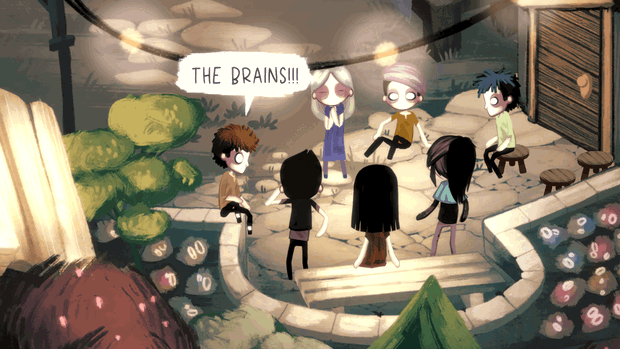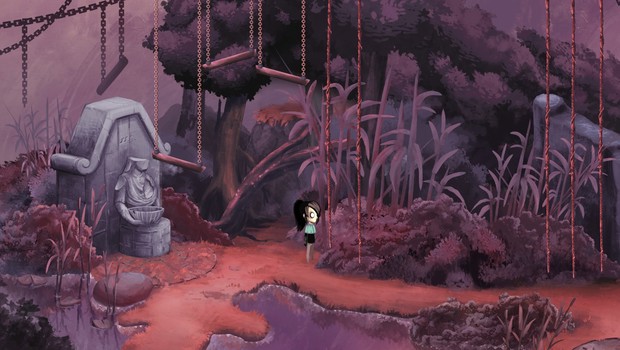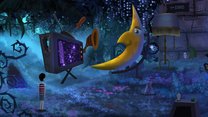Children of Silentown review – Hums right along until puzzle repetition gets old

- 0 Comments
It’s been a fair few years since I enjoyed that peculiar childhood state when the world is still full of inscrutable mystery, potential danger hides around every corner, and adults may as well be from a different planet considering their apparent inability to listen and relate. Elf Games’ Children of Silentown allows gamers of all ages to be transported to that bygone time, although it takes place in a dark fairy-tale setting that hopefully none of us can relate to. It’s a charming exercise in puzzle solving and atmospheric storytelling most of the way through, though it unfortunately loses built-up momentum in its final act, drawing too much mileage out of repetitive puzzle sections and robbing the story of a satisfying conclusion.
Lucy is one of the titular children living in the aptly named Silentown, a village where loud noises are prohibited due to the ever-present threat of monsters lurking in the surrounding forest ready to abduct and eat noisemakers. While this sounds exactly like the kind of story grown-ups tell little children in order to get them to behave, the steady stream of pictures of missing townsfolk regularly posted in the village square seems to suggest there is a kernel of truth to this bedtime tale. And when tragedy strikes Lucy’s family one night, it falls to her to throw caution to the wind and mount a rescue mission herself, leaving behind her world and braving the dangers of the woods.
Children of Silentown seems very much a game of two dissimilar halves. For the first several hours, you will spend your time exploring Lucy’s sleepy little village, dealing with sleepy little village problems, like being sent out on an errand to pick up fresh bread and vegetables for Mom, pulling a prank on the cranky farmer, or finding a way to join the other children playing behind the old barn even though there are no nosy girls allowed. It’s all enjoyably lighthearted and warmly comforting, other than the occasional adult reminder to keep it down lest the hungry monsters should come.

The eventual darker turn, when it does finally come, isn’t exactly out of the blue. The game is well-paced throughout this first half, often juxtaposing Lucy’s innocent childhood games with a dark foreboding anytime she approaches the village gates leading to the dreaded forest, or listens from her bedroom window to the strange nocturnal noises emanating from the woods. While the story always seems destined to turn its back on silly childhood games and lean into a more serious tone, the second half doesn’t hit home as successfully. The traditional point-and-click gameplay is far better suited to the humble village setting than to stealthily sneaking past hulking shapes patrolling the dangerous underbrush, and having Lucy brave the scary woods on her own means there are no conversations with others to filter the story to the player, causing it to feel more disjointed than what came before.
While traditional inventory-based puzzles feature heavily (and satisfyingly) in the game’s opening half, a few different types of logic puzzles are also lightly shuffled into the mix. A number of villagers are unwilling to open up to Lucy until she’s resolved some sort of personal conflict of theirs via one of three kinds of puzzle: one variety asks you to trace a path across a patchwork piece of fabric, threading through button holes without recrossing the path before reaching a goal; a second type requires rotating tiles on a grid in order to create an uninterrupted path from start to finish; and the third involves filling a board with criss-crossing beams of light while avoiding shining too much light onto blocks placed on it. Unfortunately, these puzzles become liberally overused during the later forest half, and really wear out their welcome.
There’s a neat music-based mechanic introduced early on that sees Lucy naturally pick up individual sounds and tones while exploring the environment, constructing them into little melodies (without any input required of the player) that allow her to interact with her surroundings in new ways. However, this doesn’t really go very far beyond being the catalyst that grants access to the logic puzzles; when a character or object is blocked from interaction, selecting the right tune by its icon will simply activate the puzzle that needs to be solved to proceed. Still, Lucy having some musical aptitude is a nice bit of character-building, particularly since it’s her mother whom we see giving her nightly singing lessons.

Lucy’s musical ability also comes into play while surviving the forest, even triggering the exact same logic puzzles, though now Lucy is singing to plants instead of people. Item-based puzzles are present here too, but they’re a bit diminished. Instead there’s one particularly large-scale puzzle fairly late in the game that involves channeling rivulets of water by realigning and adjusting contraptions via trial-and-error. There is yet a final puzzle variant near the conclusion, which finally lets Lucy’s singing talent shine, where obstacles must be conquered by issuing simple commands such as move or stay to a companion via singing the right melody. All in all, the puzzles in Silentown aren’t incredibly challenging but they’re engaging enough at first, though you’ll need to dig through plenty of repetition to reach that last little bit of late-stage variety.
The ultimate payoff for making it through the entire game, however, feels undercooked. Children of Silentown features multiple endings, completely reliant on which of Lucy’s three songs you select on the game’s final screen – and even then it’s a blind choice as each song is simply portrayed by an icon and there’s no way of knowing what type of outcome it will trigger. There’s also a secret fourth ending that requires an optional song to be acquired through finnicky vigilance, but since the forest areas frequently become locked after progressing, it’s easy to miss its requirements altogether.
The four finales don’t combine into one full resolution but are rather alternate ways to wrap up the story. While different outcomes are welcome, the issue is that the game autosaves your progress and cannot simply be reloaded to experience the other ones. This means going for a second (or more) outcome requires replaying the entire game all over, including every single mandatory puzzle along the way. That’s a high price to simply watch a new one-minute cinematic scene, particularly as some of the endings are rather unsatisfying. It’s far easier to look them up on YouTube. (Note: as of writing, the developer is looking into implementing a chapter select feature that might make this process more friendly, though, in my opinion, still not enough to be worth it.)
There’s little to criticize when it comes to Children of Silentown’s presentation. Music, although a fairly passive gameplay element, is great throughout, really setting the dolorous stage and amping up the drama when things come to a head. Making heavy use of piano compositions, the score really encapsulates Lucy’s emotions, with dark and lonely undertones even when Lucy is safe and sound in her village, and a surreal and mysterious air during the forest-exploration sequences. Even the monsters’ nighttime noises, though they sound like run-of-the-mill growling and snarling to me, are described by Lucy as being oddly musical. The only voice acting here – in the form of a sparsely used narrator – is also well done, though Lucy’s interior dialogue is often fittingly portrayed either visually or via silent text.
The game’s subdued hand-painted graphical style nicely fits the theme of a small, insular society missing any vibrant spark in life, while the woods make great stylish use of dangerous reds and serene blues. But it’s the well-animated characters that deserve the largest praise here, particularly considering how expressive they manage to be with wide, blank eyes and no other facial features to speak of. It’s a uniquely stylized look that works well and lends the game tons of emotion and expressiveness when sometimes words just aren’t enough (or are entirely missing altogether).
Final Verdict
Children of Silentown is a game with many winning qualities, but it gets in its own way in certain key areas the further it goes along. Its unassuming presentation looks and sounds great, and I really enjoyed Lucy’s story and felt for her when life took some darker turns. Which made it feel that much worse when it abruptly ended without the satisfying conclusion it so needed. Basing the outcome on a nearly random late choice, and blocking other finales without starting over from the beginning, further soured me on the endgame and ultimately impacted my overall enjoyment. I liked much of the game until that point, but not quite enough to play all six or so hours several times over. You can’t help but be charmed by Lucy’s plight, but once she leaves home her journey gets caught in the weeds of repetition, resulting in an uneven experience that somewhat lets down its promising first half.
Hot take
Your investment might begin to weaken in the later stages, but Children of Silentown is a worthwhile debut showcase of a developer able to tap into a personal, emotional narrative core.
Pros
- Easy to get behind likeable childhood heroine embarking on a personal and emotional journey
- Subdued painterly graphical style fits the atmosphere nicely
- Expressive characters, particularly considering their lack of facial features
- Great score really heightens the mood
Cons
- Logic puzzles become repetitive
- Second half shifts away from many gameplay elements that worked so well until then
- Endings include some real letdowns, and blindly choosing one cuts off all access to the others
Pascal played Children of Silentown on PC using a review code provided by the game's publisher.

- Advertisement
- Help support AGH by advertising with us











0 Comments
Want to join the discussion? Leave a comment as guest, sign in or register.
Leave a comment